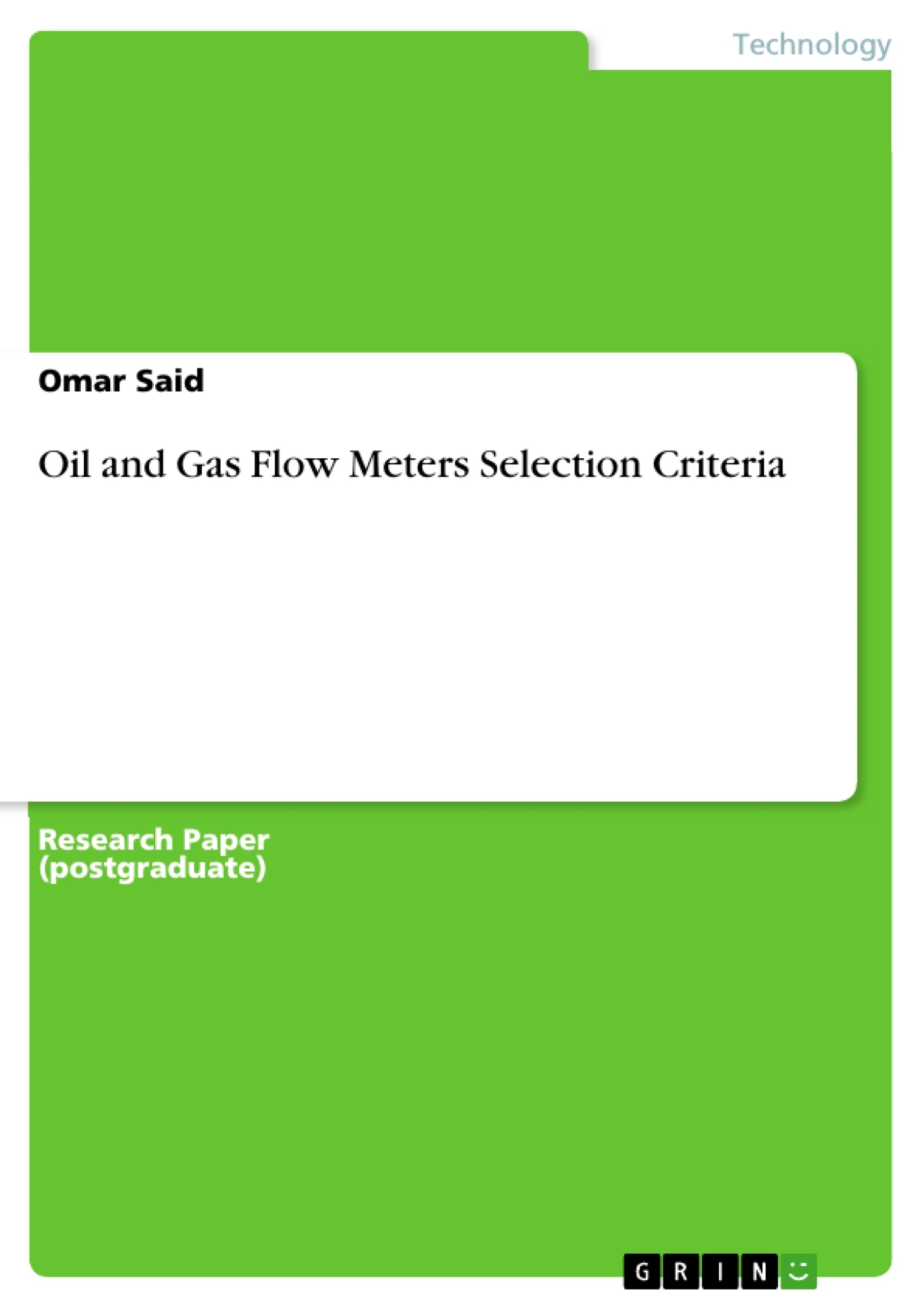The accurate measurement of liquid/gas flow rate in the oil and gas industry is significantly important. There are several types of flow meters used for this purpose. Selecting the most appropriate flow meter is sometimes a bewildering task.
The aim of this work is to study different types of flow meters used in the oil and gas industry and to create an overview of selection criteria based on several factors such as the flow meter principle, pipe size, conductivity, meter position, fluid type and accuracy, among others.
Inhaltsverzeichnis (Table of Contents)
- I. INTRODUCTION
- II. FLOW METER TYPES
- Orifice Plate
- Venturi Tube
- V-cone
- Variable Area
- Ultrasonic
- Vortex
- Electro-magnetic
- Coriolis
- Turbine
- Positive Displacement
- III. METERS ADVANTAGES AND DISADVANTAGES
- IV. SELECTION CRITERIA
Zielsetzung und Themenschwerpunkte (Objectives and Key Themes)
This paper examines the selection criteria for flow meters used in the oil and gas industry. It aims to provide a comprehensive guide to help instrumentation and control engineers choose the most suitable flow meter for specific applications. The paper analyses different types of flow meters, their advantages and disadvantages, and presents a selection criteria based on factors such as flow meter principle, pipe size, conductivity, fluid type, accuracy, and more.
- Flow meter types and their operating principles
- Advantages and disadvantages of different flow meters
- Selection criteria based on fluid properties and application requirements
- Considerations for choosing flow meters in the oil and gas industry
- Importance of consulting manufacturers for specific applications
Zusammenfassung der Kapitel (Chapter Summaries)
- I. INTRODUCTION: This chapter introduces the concept of flow measurement in the oil and gas industry, distinguishing between volumetric and mass flow. It defines flow meters and categorizes them into four groups based on their operating principles. The importance of fluid characteristics, particularly viscosity, is highlighted in relation to flow measurement.
- II. FLOW METER TYPES: This section provides an overview of various types of flow meters commonly used in oil and gas applications. Each type is briefly described, including orifice plate, Venturi tube, V-cone, variable area, ultrasonic, vortex, electromagnetic, Coriolis, turbine, and positive displacement meters.
- III. METERS ADVANTAGES AND DISADVANTAGES: This chapter presents a table (Table 1) summarizing the advantages and disadvantages of each flow meter type discussed in the previous chapter. This information is crucial for understanding the suitability of different meters for specific applications.
- IV. SELECTION CRITERIA: This chapter delves into the selection criteria for flow meters. It presents a table (Table 2) that outlines the suitability of different flow meters based on various factors, including fluid type, pipe size, temperature, conductivity, and more. This table aids engineers in making informed decisions about the most appropriate flow meter for their specific needs.
Schlüsselwörter (Keywords)
The key terms and concepts addressed in this paper include flow meters, oil and gas industry, selection criteria, fluid characteristics, viscosity, flow rate, volumetric flow, mass flow, orifice plate, Venturi tube, V-cone, variable area, ultrasonic, vortex, electromagnetic, Coriolis, turbine, positive displacement, accuracy, rangeability, and application requirements.
- Quote paper
- Omar Said (Author), 2017, Oil and Gas Flow Meters Selection Criteria, Munich, GRIN Verlag, https://www.grin.com/document/366484



